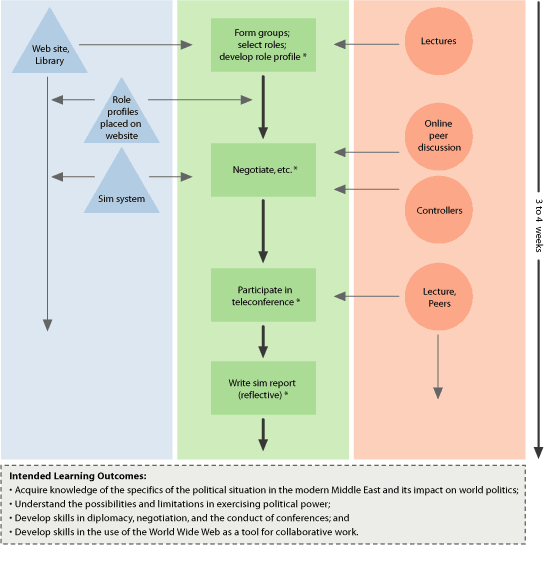|
SUPPORTS SUPPLIED
Collaborative teams, competing universities and the role of
controllers.
The primary support given to students is the background
to Middle East politics provided in the lectures. We also
run a training session in using the online system. During
the simulation, the groups provide peer support.
The primary role of controllers is to monitor the simulation,
rule on proposed major actions, leak information, and provide
feedback to the lecturers for assessment. There is no official
"controller manual", but Raphael Veit has a document
that he gives to new controllers. Controllers also discuss
their role as a group before the simulation begins.
SIGNIFICANCE OF SUPPORT STRATEGIES
The training session is probably not important nowadays, since
most students are already familiar with web-based interfaces,
and the system has been designed to be easy to use.
SUPPORT STRATEGY ADAPTATION
The in-group peer support is important; however, it would
be possible to run the simulation with a single player playing
each role, although probably not quite as effectively and
certainly not for as long a duration as with teams.
|
